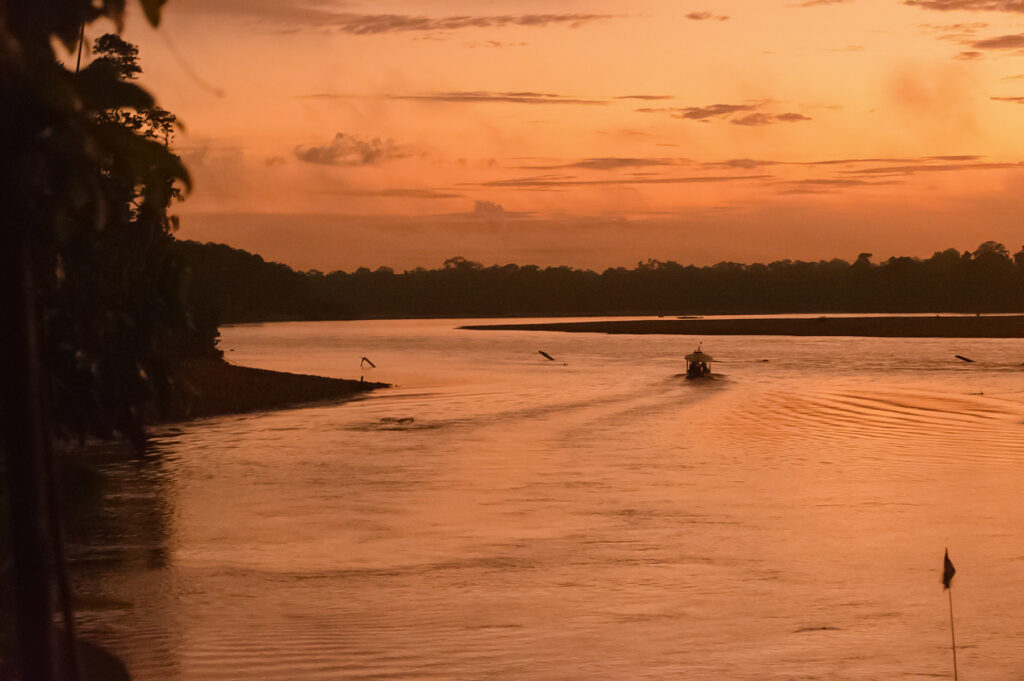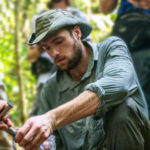
Ethan Scott Duvall
Conservation Fellow
I am an ecologist with particular interests in ornithology (birds) and biogeochemistry (nutrient cycling). Broadly speaking, my research examines wildlife responses to anthropogenic change and subsequent impacts on ecosystems. My PhD research focuses on the interactions between animals and the chemistry of their environments. I am currently a PhD student in the Ecology and Evolutionary Biology Department at Cornell University. I received my BS in Environmental Science with an emphasis in Terrestrial Ecology from Western Washington University. Prior to my PhD, I worked as a GIS Lead for Cascade Water Alliance, a municipal water supply corporation in the Puget Sound region.
I have worked various outdoor jobs in the past, and find much of my inspiration out in the field. I grew up in the Cascade Mountains of Washington State and will always call the Pacific Northwest home.
Learn more about Ethan Scott Duvall
January 18, 2023
Reflections on ecotourism and wildlife conservation in the Peruvian Amazon
Excitement rushes over me as I arrive in Puerto Maldonado, a small city in the state of Madre de Dios, Peru, and the gateway to the southern Peruvian Amazon. Before locating my hostel, I was already seeking adventure. Walking around the town’s plaza you will find numerous locals and small businesses ready to provide a variety of guided Amazon experiences; piranha fishing, bird watching, lake tours – it’s a jungle lover’s paradise.
The sun was beginning to set, and it seemed unlikely I would find a guided experience so late in the evening. Nevertheless, I stumbled upon a local guide leading a small group of French tourists towards the river. Their objective: to find Spectacled caiman (Caiman crocodilus) – a crocodilian in the alligator family. With little hesitation, I asked if I could join them. 20 soles later, I was on a small boat and headed upriver.
Spectacled caiman (also known as White caiman or Common caiman) are found throughout much of Latin America, extending south of Mexico into the Amazon Basin. They are generalist carnivores, hunting nocturnally for almost anything they can fit in their jaws. Though they are listed as non-threatened, caiman have been severely depleted or extirpated in many areas due to poaching for their leather skins, for meat, or to be sold in the illegal pet trade.
As we head up the river, our guide, Santos (alias name), scans the riverbanks with a flashlight. He uses the light to spot reflections in the caiman’s eyes. At the speed we were moving, and our distance from the riverbank, I was doubtful of our caiman-searching mission. Even so, in about 15 minutes, Santos spotted the first caiman. He signals the boat captain toward the riverbank, turns off his lights, and we slowly drift into the vegetation. Before I knew what was happening, SPLASH. Santos had jumped off the front of the boat, quickly popping back up with a small caiman in his hands.
I couldn’t help but consider the ethics behind wildlife handling. Yet, as I watched the smiles on the tourists’ faces, and their attention to the guide as he talked about the species, I began weighing the costs and benefits of the experience.

Santos returned to the boat and began showing the caiman to the tourists, allowing each to hold, touch, and take pictures with the animal. This individual was a juvenile and quite small, though large males can reach lengths of 2.5 meters (8 ft). Seeing this beautiful animal up-close was incredibly special, though also the slightest bit disconcerting. Watching as bright lights shone in the young caiman’s eyes while passed around for pictures, I couldn’t help but consider the ethics behind wildlife handling (though I had no doubt the small caiman was fine thereafter). Yet, as I watched the smiles on the tourists’ faces, and their attention to the guide as he talked about the species, I began weighing the costs and benefits of the experience.
While this little caiman may have been unlucky tonight, it played a much larger role in the coexistence of caiman and humans. The opportunity to interact with this small caiman up close provided a memorable and unique experience to tourists, a value reflected in the price they paid for this guided adventure and the smiles on their faces. Indeed, the business of ecotourism can be quite profitable, but it is contingent on one thing: the presence and persistence of wildlife populations. The more caiman present, and the closer they can be found to the city, the more revenue opportunity exists. With the support of ecotourism, conservation becomes part of a sustainable business model.
The business of ecotourism can be quite profitable, but it is contingent on one thing: the presence and persistence of wildlife populations. With the support of ecotourism, conservation becomes part of a sustainable business model.
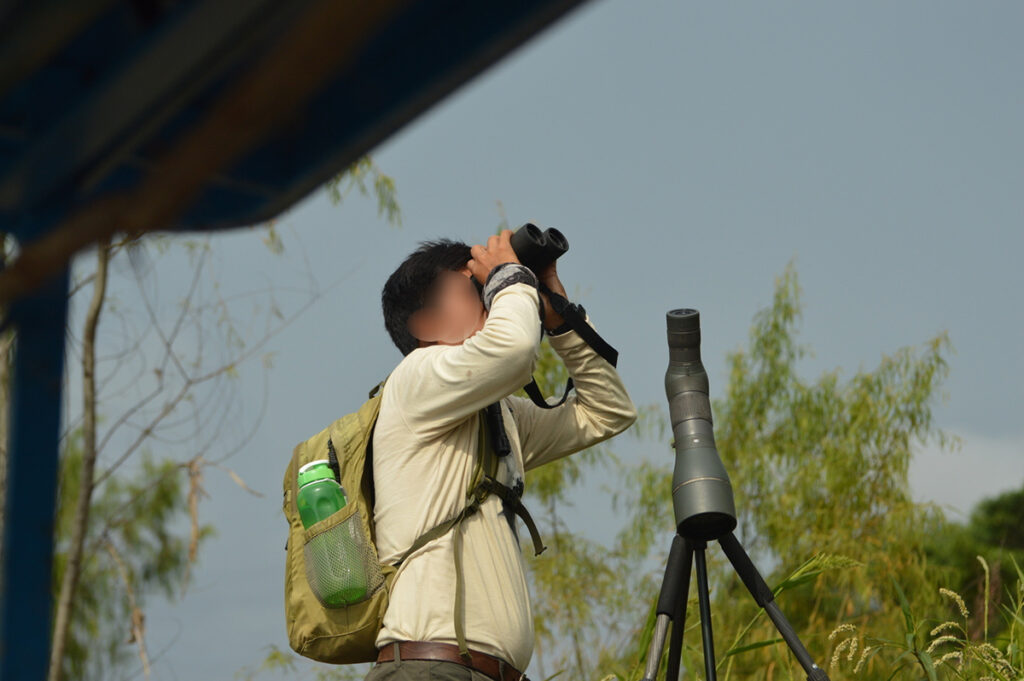
While the outcome of “conservation” may not always justify the disturbance of animals, and the extent to which wildlife handling can impact an organism varies dramatically by species, it’s clear that such experiences can play an important role in supporting conservation. I’ve witnessed a lot of human-wildlife experiences in my life, but for some reason, this one stood out.
As we boat back towards the city, I was able to learn a lot about our guide, Santos. Santos is 34 with two young kids. He has spent most of his adult life as a machine operator at gold mining sites – an environmentally harmful and mostly illegal practice in Peru (see here for more on the topic). However, during the pandemic, Santos decided he wanted to make a change in his career. For the last two years, Santos has been training his ability to spot caiman and other wildlife in hopes of ecotourism returning after the COVID-19 pandemic. Clearly, he was successful, and happily so. Santos stated that his sons now also strive to be naturalists, and that he is very proud of his work as a guide.
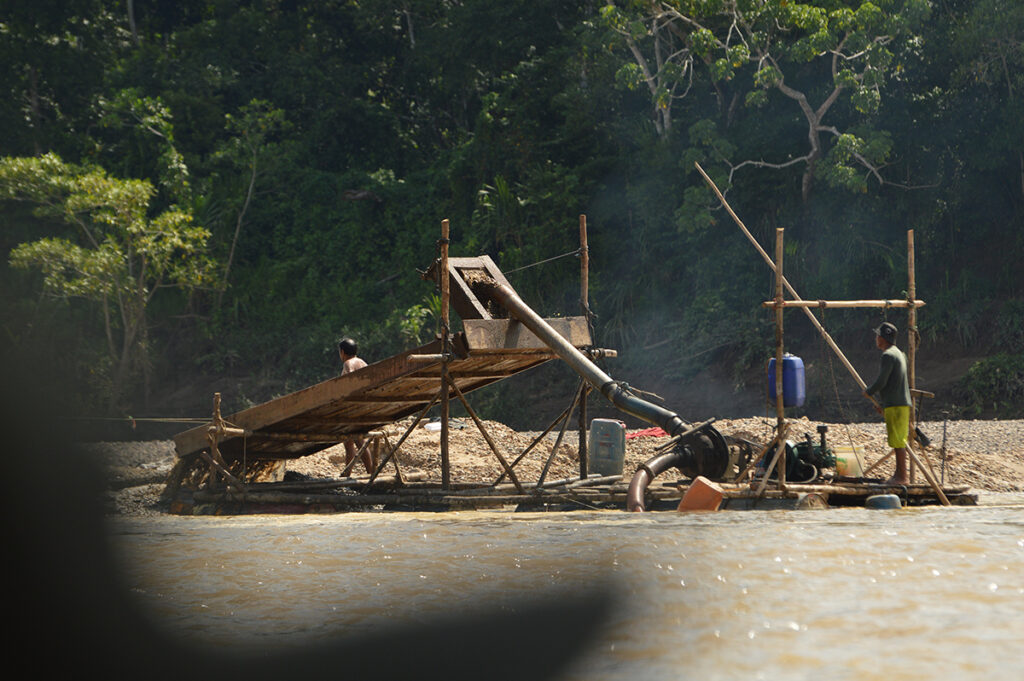
The next day, I was heading upriver towards the Tambopata Research Center alongside a few other researchers, tourists, and guides. I quickly befriended one of the guides, Alejandro (alias name), who happily helped me identify several bird species along the way (a foolproof way of making new friends in the Amazon). After an eventful day of exploration, I was able to sit down with Alejandro in the evening and learn more about his life as a guide in the Amazon.
When the COVID-19 pandemic hit, all guides in the reserve lost their jobs. With no alternative source of income, many of the guides were forced to work at illegal gold mines to feed their families. This transition was deeply upsetting – from sharing the beauty of the jungle with others, to participating in its destruction.
Alejandro had been a guide in the Tambopata National Reserve for 12 years. He was professionally trained and an expert naturalist (which I can attest to). He loves his line of work and wouldn’t opt to trade it for anything else. Sadly, this decision was not made for him in 2020. When the COVID-19 pandemic hit, all guides in the reserve lost their jobs. With no alternative source of income, many of the guides, including Alejandro, were forced to work at illegal gold mines to feed their families. Alejandro clearly expressed how upsetting this transition was – from sharing the beauty of the jungle with others, to participating in its destruction.
Some eco-lodges located on the outskirts of the reserve were forced to subsidize local farmers to stop them from hunting wildlife. Like illegal gold mining, game huntIng is a reliable source of food and income when desperately needed. By subsidizing locals, eco-lodges could mitigate loss of biodiversity in their areas, ensuring that wildlife were still abundant for tourists when the pandemic effects faded.
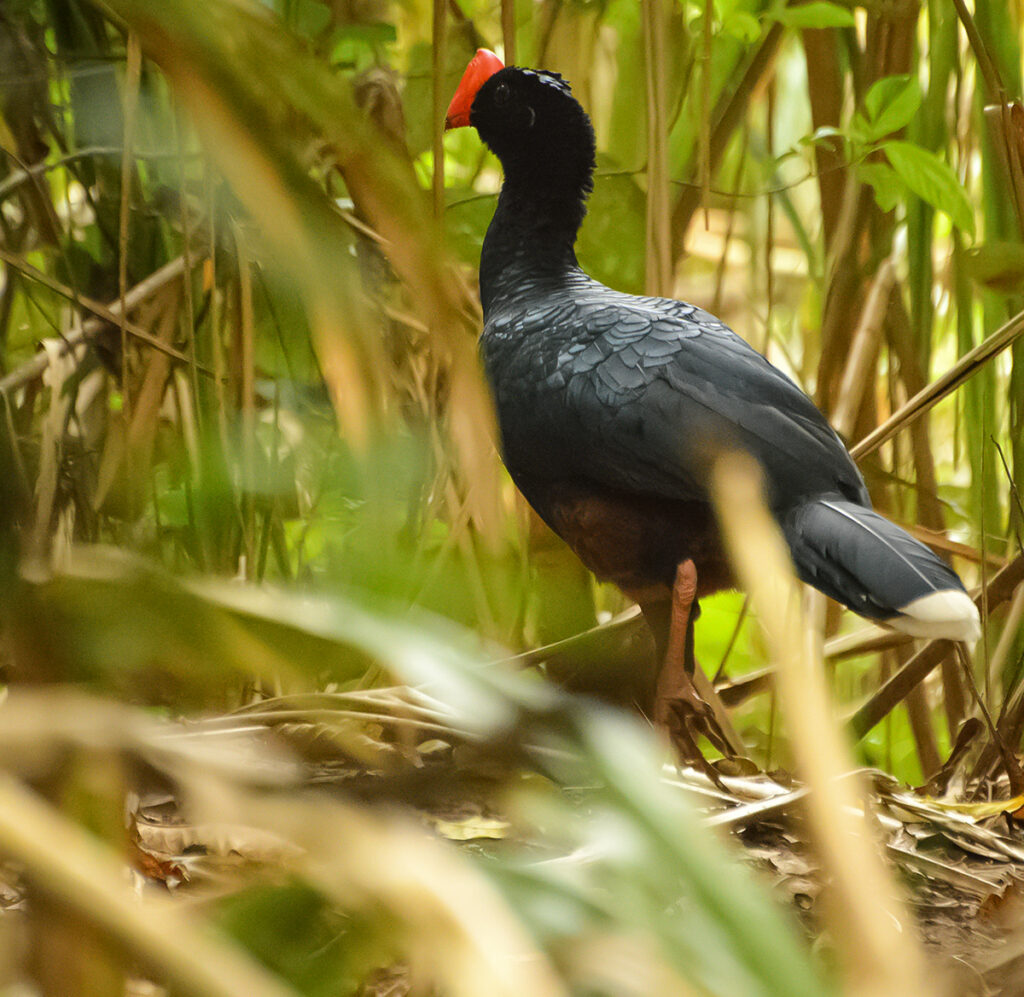
I was extremely grateful for Alejandro’s honesty, and couldn’t imagine how difficult it must have been for him and the many other guides. It was a lot for me to process, but one thing was clear – ecotourism can play a major role in wildlife conservation in the Amazon, through:
- Economic incentive to conserve animals
- Creation of jobs which provide an alternative to destructive practices
- And the ability to passionately connect humans with nature
Unfortunately, my experiences also elucidated the sensitivity of ecotourism to global issues and the adverse effects this can have on biodiversity. Such a topic is far more complex than I can describe here (especially when considering the environmental footprint of ecotourism), but it is a topic of much relevance and importance. However, ecotourism clearly provides positive opportunities for people and wildlife alike – opportunities that locals don’t take for granted, and neither should we.
